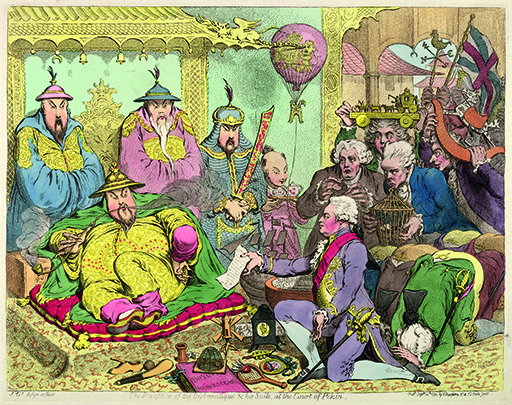1.4 Western Advance
Gradually, however, the outside world sought access to the resources of the interior of Asia while also seeking to generate new lucrative markets, although the vastness of China and its large population ensured that East Asia did not succumb to colonisation to the same extent as other parts of the world. In 1792, the British envoy, Lord Macartney, in seeking an audience with the Chinese Emperor, Qianlong, was required to kowtow before the emperor. Britain, the most economically developed and most powerful European country was seen as an inferior state by the Chinese Empire. Macartney did kowtow, but only on one knee, signalling the start of a struggle between Western states and China.
Within seventy years, the much weaker and, by then, archaic Chinese fleet was ‘reduced to matchwood’ by Britain’s iron-clad steamers and heavy armaments (Pagden, 2001, p. 67). China was then subjected to unequal treaties through which Western states extracted privileged rights over Chinese territory to secure valuable resources which were paid for, in the British case, by opium from its Indian colony. These unequal treaties remained in place until the Second World War, by which time China was embroiled in a civil war and British leadership in the international system had given way to US dominance.

